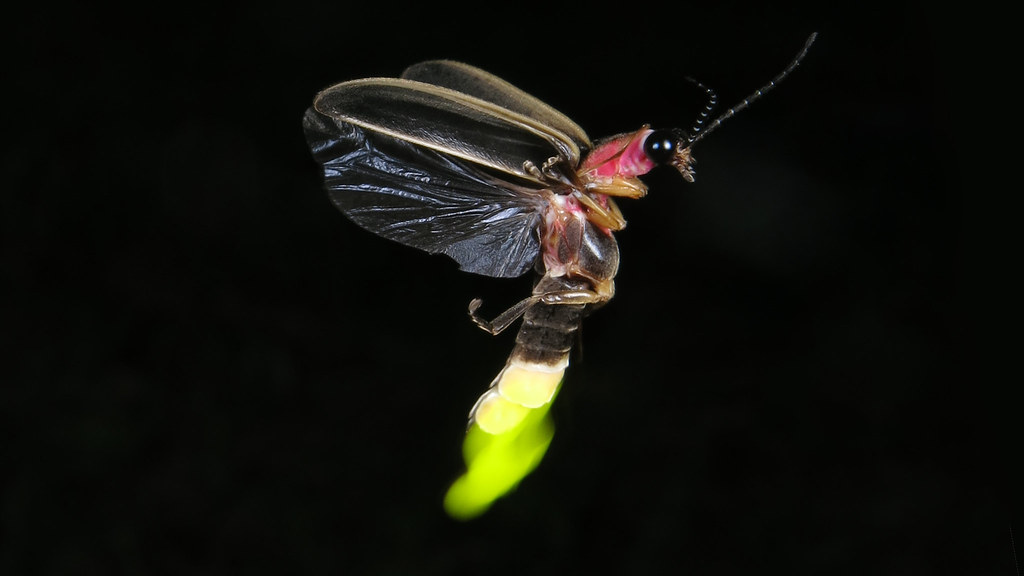Fireflies of Arden
There is something magical about a warm summer night punctuated by the soft glow of fireflies. I have many fond memories of running barefoot in my Baltimore neighborhood, gleefully catching fireflies and wishing I could harness their light for myself. Unfortunately, in some areas, that childhood pastime is being lost due to the decline of fireflies.
Fireflies (aka lightening bugs) are soft-bodied beetles in the Lampryidae family. Maryland boasts over 25 species, some of which don’t glow at all and others which can glow from their egg through adult stages. While the adult stage is the most visible, fireflies spend most of their time underground, growing and chomping down on slugs, snails, and sometimes even each other. Firefly larvae are formidable carnivores, hunting down all types of prey, securing them with strong jaws, and injecting them with neurotoxic saliva.

Eastern firefly by Terry Priest CC by SA 2.0
Firefly bioluminescence is believed to have evolved as a way to advertise toxicity to potential predators. Later down the evolutionary line, fireflies also adopted ways to advertise mating availability with their flash patterns. For species that do have a glow, the males often emit their light patterns while flying while females sit on vegetation or on the ground and advertise to potential suitors. A complex chemical reaction occurs in the light organs of the firefly to cause the glow. At one time, researchers harvested the enzymes used in this reaction (luciferase) to detect bacterial pathogens in food. Today, synthetic substances modeled after firefly enzymes are used.
This summer, we are trying out our first ever Fireflies of Arden project where we are encouraging folks to get outside from mid-June through mid-July to document fireflies in their backyards. During the summer, the two most common species in our area are the black firefly (Lucidota atra) which is a daytime flyer that lacks bioluminescence and the eastern firefly (Photinus pyralis) which flies at night and has a characteristic J-shaped flash dance every six seconds. Throughout the year, winter fireflies (Ellychnia corrusca) and spring tree-top flashers (Pyractomena borealis) can also be seen in our area. Due to the lack of reporting and difficulty identifying fireflies, it is likely there are other species present in our area, too.
We hope you will consider joining us to relive the magic and help contribute to our understanding of the fireflies in our area. Like many other species, habitat loss is one of the leading causes of decline for fireflies. However, we can give them a boost by providing nursery habitat with leaf litter, rotting logs, and moist soil free from pesticides. Of course, planting native plants will also help, too. Check out our webpage at https://kerrysnature.org/ardenfirefly/ for more information.